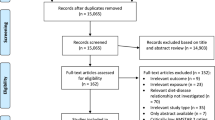Summary
Urinary excretion of thioethers has been used as an indicator of exposure to potentially alkylating agents in several studies. These studies, however, often had the disadvantage of high and varying background values. We have studied methods for sampling and determination of urinary thioethers. Modifications have been made making it possible to increase the sensitivity of the method substantially. The thioethers were extracted with ethyl acetate and hydrolyzed with sodium hydroxide. The thiols were then determined spectrophotometrically with the reagent of Ellman. The extraction procedure and the addition of the reagent were found to be critical steps, whereas the crude urine samples were comparatively stable during storage at −20°C. Diet was found to be the most important factor. Using a standardized diet over 24 h with chicken, potatoes, bread and dairy products as the major components, excluding vegetables of the Cruciferae family, 24 subjects excreted low amounts of thioethers, 3.2 ± 0.2 mmol/mol creatinine, (x ± SEM). Individual values did not exceed 6.5 mmol/mol creatinine. Without food restrictions the mean values and the standard deviations were increased up to five and ten times respectively. Ingestion of certain foodstuffs increased the thioether excretion up to 20 times. Twelve smokers (20 cig/d) excreted 6.7 ± 0.4 mmol/mol creatinine (x ±SEM, afternoon samples and standardized diet). No effects of gender and age of the subject could be observed. It is recommended that diet factors be kept under strict control to increase the sensitivity of the thioether assay and to avoid misleading results due to diet effects.
Similar content being viewed by others
References
Agrup G, Falck B, Fyge K, Rorsman H, Rosengren AM, Rosengren E (1975) Excretion of 5-S-cysteinyldopa in the urine of healthy subjects. Acta Derm Venerol (Stockh) 55:7–9
Ahlborg G Jr, Bergström B, Hogstedt C, Einistö P, Sorsa M (1985) Urinary screening for potentially genotoxic exposures in a chemical industry. Br J Ind Med 42:691–699
Bartels H, Böhmer M, Heierli C (1972) Serum-Kreatinbestimmung ohne Enteiweißen. Clin Chim Acta (in German, English summary) 37:193–197
Brocker ER, Benn MH, Lüthy J, von Däniken A (1984) Metabolism and distribution of 3,4-epithiobutanenitrile in the rat. Food Chem Toxic 22:227–232
Buffoni F, Santoni G, Albanese V, Dolara P (1983) Urinary mercapturic acid in chemical workers and in control subjects. J Appl Toxicol 3:63–65
van Doom R, Borm PJA, Leijdekkers ChM, Henderson PTh, Reuvers J, van Bergen TJ (1980) Detection and identification of S-methylcysteine in urine of workers exposed to methyl chloride. Int Arch Occup Environ Health 46:99–109
van Doom R, Bos RP, Leijdekkers ChM, Wagenaas-Zegers MAP, Theuws JLG, Henderson PTh (1979) Thioether concentration and mutagenicity of urine from cigarette smokers. Int Arch Occupt Environ Health 43:159–166
van Doom R, Leijdekkers ChM, Bos RP, Brouns RME, Henderson PTh (1981) Detection of human exposure to electrophilic compounds by assay of thioether detoxication products in urine. Ann Occup Hyg 24:77–92
van Doom R, Leijdekkers ChM, Bos RP, Brouns RME, Henderson PTh (1981) Enhanced excretion of thioethers in urine of operators of chemical waste incinerators. Br J Ind Med 38:187–190
van Doom R, Leijdekkers ChM, Henderson PTh, Vanhoorne M, Vertin PG (1981) Determination of thio compounds in urine of workers exposed to carbon disulfide. Arch Environ Health 36:289–297
Ellman GL (1959) Tissue sulfhydryl groups. Arch Biochem Biophys 82:70–77
Hegnauer R (1963) Chemotaxonomie der Pflanzen, Bd 2 (in German). Birkhäuser, Basel Stuttgart, S 315–325
Heinonen T, Kytöniemi V, Sorsa M, Vainio H (1983) Urinary excretion of thioethers among low-tar and mediumtar cigarette smokers. Int Arch Occup Environ Health 52:11–16
Ioannou YM, Burka LT, Matthews HB (1984) Allyl isothiocyanate: comparative disposition in rats and mice. Toxicol Appl Pharmacol 75:173–181
Jagun O, Ryan M, Waldron HA (1982) Urinary thioether excretion in nurses handling cytotoxic drugs. Lancet 2:443–444
Kilpikari I (1981) Correlation of urinary thioethers with chemical exposure in a rubber plant. Br J Ind Med 38:98–100
Lafuente A, Mallol J (1986) Thioethers in urine during occupational exposure to tetrachloroethylene. Br J Ind Med 43:68–69
Malonova H, Bardodej Z (1983) Urinary excretion of mercapturates as a biological indicator of exposure to electrophilic agents. J Hyg Epidemiol Microbiol Immunol 27:319–328
Mennicke WH, Görler K, Krumbiegel G (1983) Metabolism of some naturally occurring isothiocyanates in the rat. Xenobiotica 13:203–207
Newman AA (1975) Chemistry and biochemistry of thiocyanic acid and its derivatives. Academic Press, London, pp 156–167
Seutter-Berlage F, van Dorp HL, Kosse HGJ, Henderson PTh (1977) Urinary mercapturic acid excretion as a biological parameter of exposure to alkylating agents. Int Arch Occup Environ Health 39:45–51
Seutter-Berlage F, van Dorp HL, Kosse HJJ, HoogAntink JMT, Wagenaars-Zegers MAP (1979) The estimation of mercapturic acids and other thioethers in urine: In: Strik JJTWA, Koeman JH (eds) Chemical porphyria in man. Elsevier/North Holland, Amsterdam, pp 228–231
Stock JK, Priestly BG (1986) Urinary thioether output as an index of occupational chemical exposure in petroleum retailers. Br J Ind Med 43:718–720
Rinderknecht H, Thomas D, Aslin S (1958) γ-Glutamyl-S-methylcystein and andere Peptide in the Mondbohne (Phaseolus lunatus L). Hely Chim Acta (in German, English summary) 41:1–11
Vainio H, Savolainen H, Kilpikari I (1978) Urinary thioether of employees of a chemical plant. Br J Ind Med 35. 232–234
Virtanen AI, Matikkala EJ (1960) Neue γ-Glutamylpeptide in der Zwiebel (Allium cepa). Hoppe Seylers Z Physiol Chem (in German, English summary) 322:8–20
White RH (1975) Occurrence of S-methyl thioesters in urines of humans after they have eaten asparagus. Science 189:810–811
Zacharius RM, Morris CJ, Thompson JF (1959) The isolation and characterization of γ-L-Glutamyl-S-methyl-L-cys-teine from kidney beans (Phaseolus vulgaris). Arch Biochem Biophys 80:199–209
Author information
Authors and Affiliations
Rights and permissions
About this article
Cite this article
Aringer, L., Lidums, V. Influence of diet and other factors on urinary levels of thioethers. Int. Arch Occup Environ Heath 61, 123–130 (1988). https://doi.org/10.1007/BF00381616
Received:
Accepted:
Issue Date:
DOI: https://doi.org/10.1007/BF00381616




